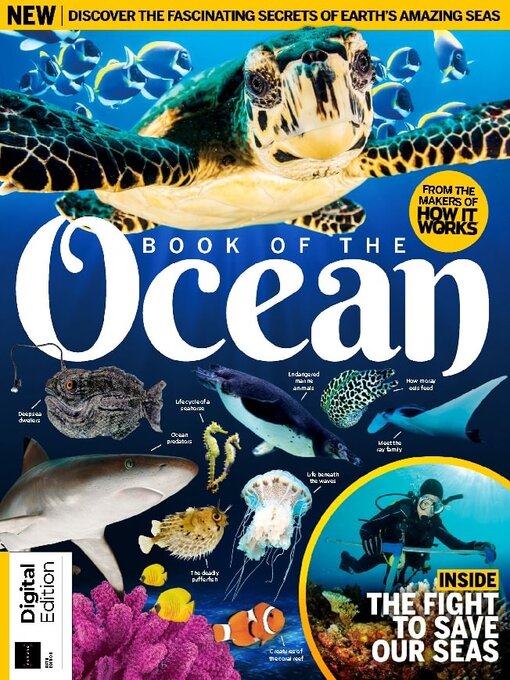Covering around 70 per cent of our planet’s surface and home to more than 200,000 known species, the world’s oceans are vital to life on Earth. However, despite producing around half the world’s oxygen and helping to regulate our climate and weather patterns, human behaviour has put our incredible oceans and the amazing animals within them at risk. In Book of the Ocean, we go beneath the surface to explore the fascinating secrets of the sea and take an in-depth look at some of the planet’s magnificent marine creatures, from killer whales and sea turtles to seahorses and starfish. We also explore what we can do to help protect these vital environments and discover ten of the most endangered ocean species.
BOOK OF THE Ocean
How It Works: Book Of The Oceans (5th Ed)
PROTECTING OUR OCEANS
INTRODUCING THE OCEAN • Dynamic, rich in resources and teeming with life, it is the Earth’s most valuable environment
Hydrothermal vents
Oceans by the numbers
The Earth’s ocean basins • How geographers have divided up the Earth’s global ocean
Zones of the oceans • The layers we use to describe the ocean depths based on light
HOW WE WILL FIX THE PLASTIC PROBLEM • Plastic waste is choking the planet. What can we do to clean the trash from the oceans?
The plastic problem • How does plastic get out into the environment?
DURABLE CHAINS • Strong plastic is both useful and an environmental threat
The bacteria that eat plastic • In 2016, scientists found a plastic-munching bug at a bottle recycling facility in Japan
WHAT IS PLASTIC?
5 FACTS ABOUT COMPANIES MAKING CHANGES
The challenge of recycling • Some items are harder to reycle than others
A lifetime of plastic • We produce it by the ton but use it for a relatively short time
The Ocean Cleanup • The floating nets collecting waste in the oceans
How much plastic do we produce?
Why won’t plastic biodegrade?
WHAT CAN YOU DO?
10 ENDANGERED OCEAN SPECIES • Meet the incredible marine species highlighting why we need to act now to save our oceans
SECRETS OF THE SEA
Extreme oceans • Counting down the deepest, deadliest, stormiest and downright most hostile environments on Earth
Submarine volcanoes • Our planet’s most productive volcanic activity happens at the crushing depths of ocean ridges
How does wind create waves? • Explore how energy passes through water to help shape our coastlines
What makes a wave break? • Find out what happens when the ocean meets the shore
Ocean currents explained • The conveyor belt that keeps the oceans healthy
What are brinicles? • These so-called ‘ice fingers of death’ are a chilling phenomena
MEGA TSUNAMI • Among the most epically destructive forces on Earth, tsunamis cause catastrophic levels of carnage, unearthing trees, levelling buildings and ending life. How It Works delves to the bottom of the ocean to track and explain their causes and formation
Durable chains • How tsunamis are formed
Head to Head
The DART II tsunami detection system • Introducing the system and technology that aids scientists in detecting upcoming tsunamis
The 2004 Indian Ocean tsunami • Claiming the lives of over 200,000 people, the Indian Ocean tsunami of 2004 was literally off-the-scale in terms of both damage and destruction
Amazing ALGAE • These organisms are more than just green slime - they have shaped human history and will go on to protect our future 050
Dinoflagellates: dazzling and dangerous
Foraging for your own seaweed snacks
Tim van Berkel
Seaweed distribution • These global species live on the shoreline, each thriving in...
